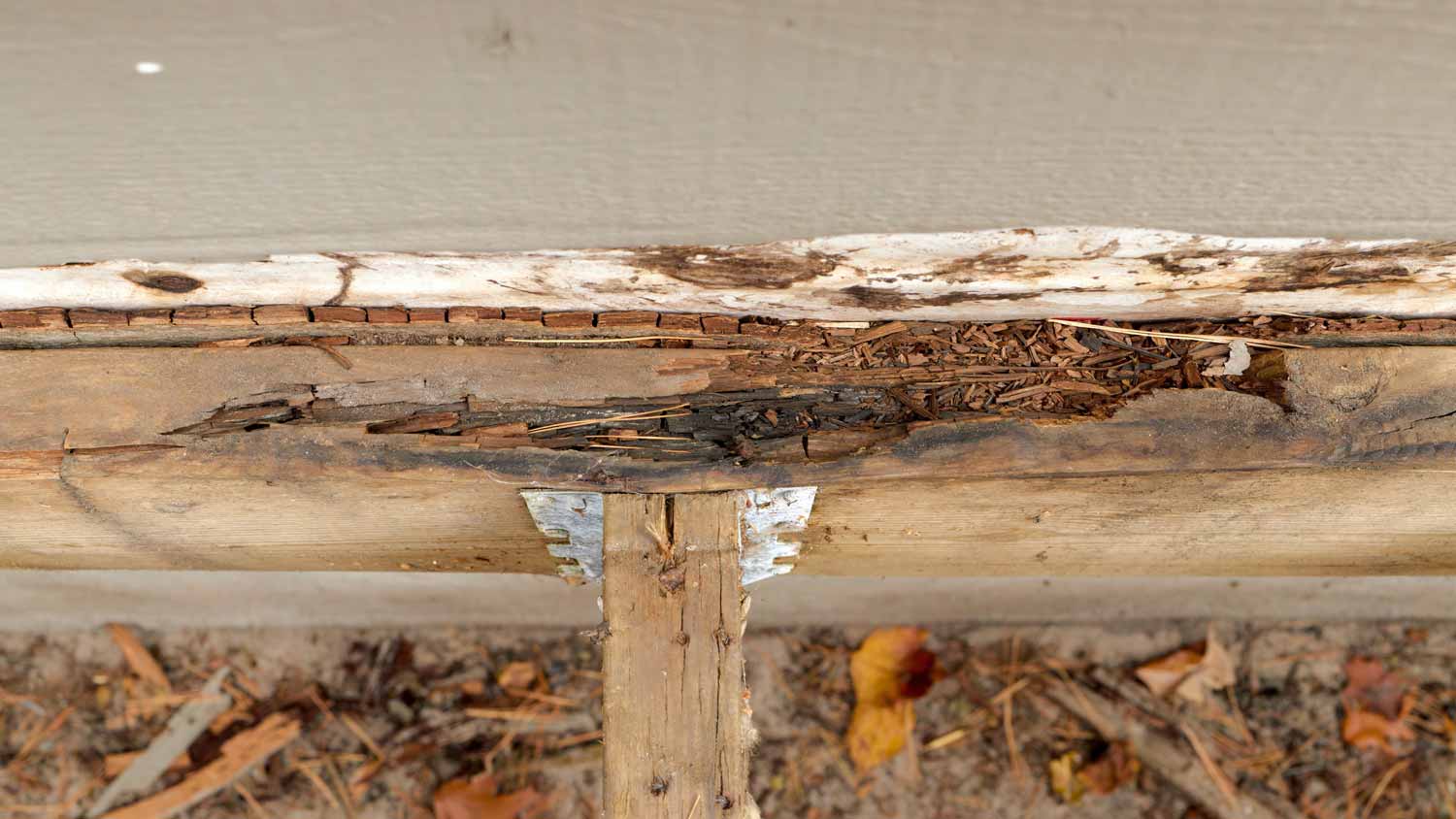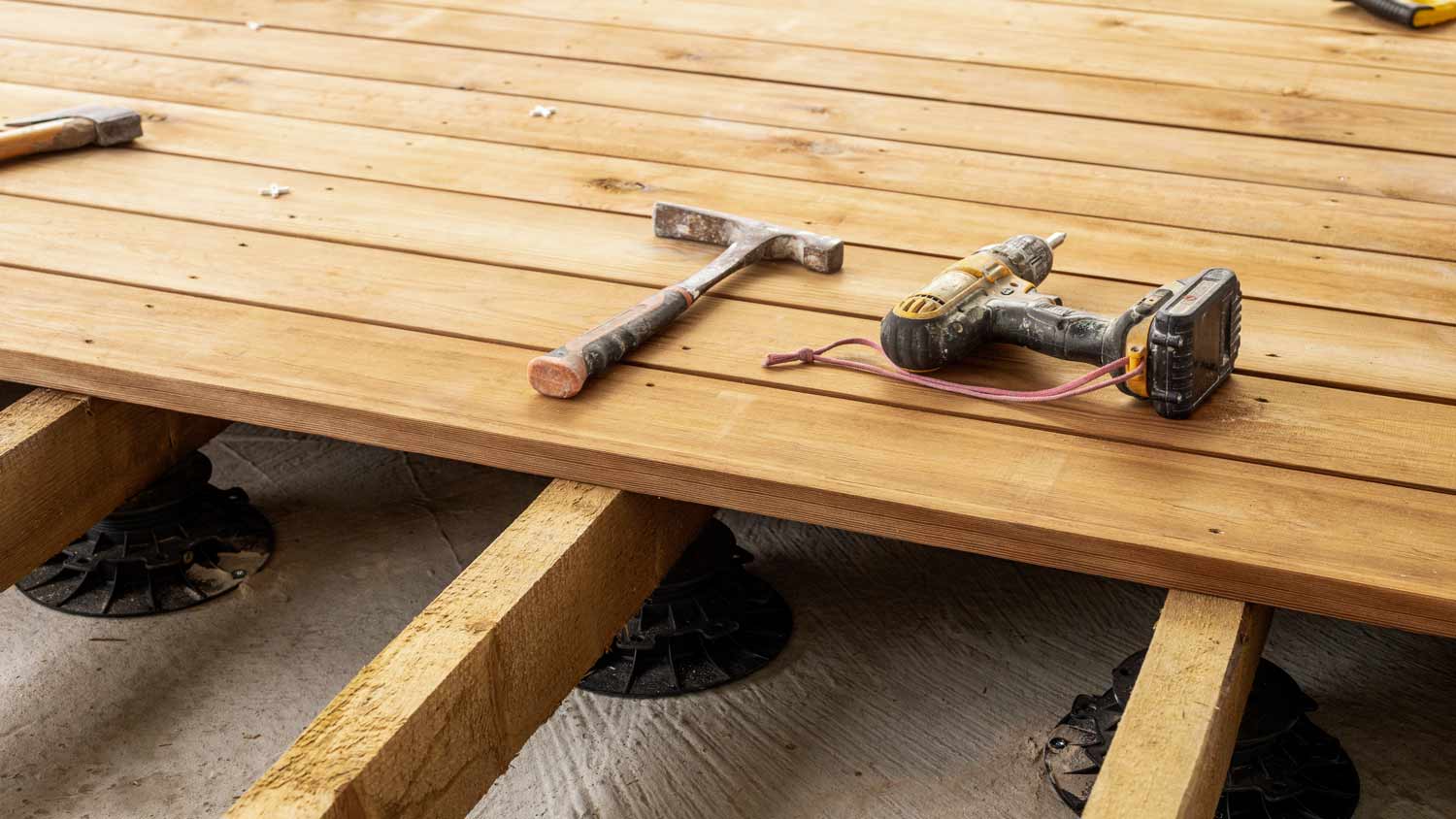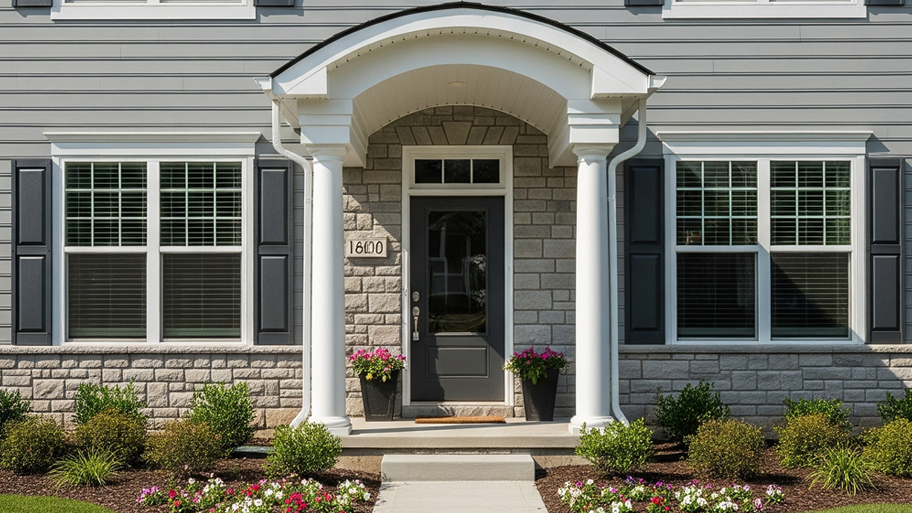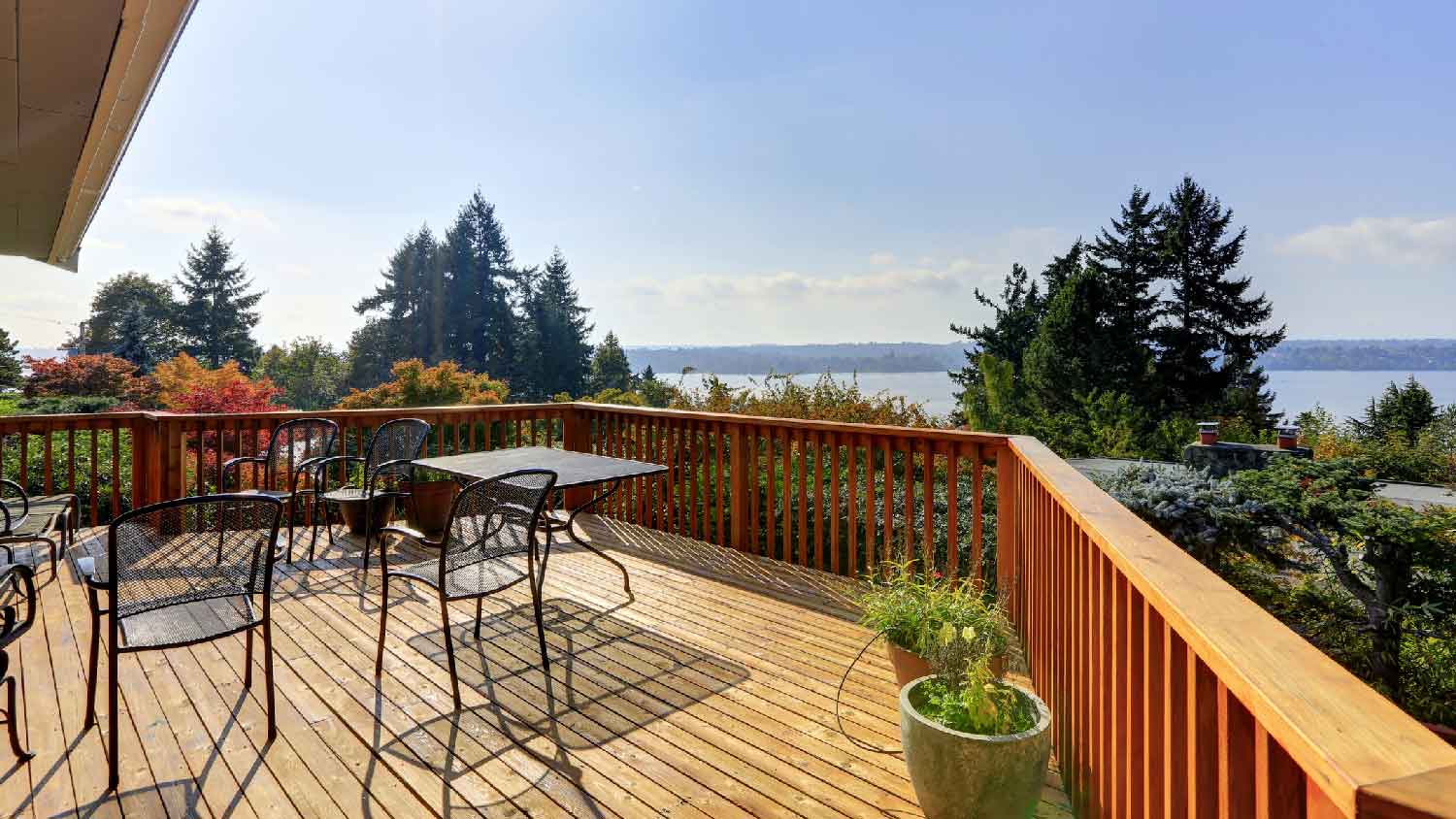
Trellises are structural pieces that add to your garden, but they can also add to your bills. Keep reading to find out how much a trellis costs to build.
Don’t ignore these red flags


Major warning signs include cracks, mold, rust, and warping.
A defective deck poses risks to homeowner safety and the house itself.
It’s cheaper and easier to repair a deck than to replace it, which costs $7,900 on average.
Between year-round exposure to the elements and daily wear and tear, decks need regular upkeep to stay in tip-top shape. But how do you know when a warped board or wobbly railing calls for a simple repair or signals a larger issue? Below, we’ll explain the key signs that your deck needs to be replaced so you can address the problems before they become a safety issue.
When a deck experiences structural issues, it poses a physical safety risk. Damaged or unstable boards and railings can easily cause someone to fall or get cut by a loose nail or splinter. Some issues can even lead to a total deck collapse, which might result in serious injury. That’s why it’s best to address these warning signs before they get out of hand.
From obvious damage to hazards that are harder to see, here are the biggest signs your deck needs some handiwork.
Damage comes in many forms, but it’s one of the easiest signs to spot. Look for boards that are cracked, splintering, warped, or broken. If the damage is minimal, replacing a few deck boards is easy, and you won’t have to pay for a full-scale deck replacement. However, damaged boards can indicate more worrisome issues, which we’ll cover below.
.jpg?impolicy=leadImage)
A telltale sign your deck needs to be repaired, if not entirely replaced, is if it’s sagging. Sometimes, you’ll notice the problem simply by looking at your deck; other times, you can feel the boards sagging underfoot. Sagging indicates an issue with the footings, posts, or joists. Have a local deck pro inspect these areas and advise the best course of action.
If mold, mildew, and algae are overtaking your deck, it’s a sign of excess moisture exposure, which can lead to rotting wood. Fungi and algae tend to grow underneath a deck where it’s especially damp and shady, so check the area regularly. Even if you remove mold and algae, check if the surrounding wood is soft or rotten.
.jpg?impolicy=leadImage)
It’s common for nails, screws, and other metal parts to rust over time, especially if you live in a wet, humid area. However, rust is a bigger concern if it causes metal parts to weaken or slip out of place.
Termites, carpenter ants, carpenter bees, and even rodents are just a few critters that can damage a deck. If the infestation is severe, the bugs may be visible to the naked eye. If not, look for droppings, bite marks, splintered wood, small holes where insects can burrow, and hollow sounds when you walk across the deck.

A ledger board is a long piece of lumber that connects the deck to the house, usually by bolts or screws. It’s one of the most important parts of a deck, and any damage to it is a major concern because it puts the deck’s structural integrity at risk. Check if the ledger board is cracked, slanted, or contains any loose screws.
Slanted posts are an immediate safety hazard since posts provide crucial support to the rest of the deck. Luckily, pros can often repair deck posts by strengthening the connectors or rebuilding the footings. If not, it’s time for a full rebuild.
Before deciding to tear down your old deck and build a new one, you should assess whether the problems are minor enough to repair. An experienced pro can distinguish a serious issue from something easily fixed. Schedule an inspection by a professional deck builder in your area. They’ll let you know if the deck is salvageable or if a full rebuild is necessary.
While repairing damage to a simple, ground-level deck is manageable for some homeowners, especially those with carpentry experience, it’s best left to the pros. After all, a minor construction mistake can have major consequences, ranging from damage to your house to physical injury. That’s why we recommend contacting one of the many types of professionals who can build a deck, from general contractors to specialized deck experts.
Keeping up with deck maintenance, from minor repairs to regular cleaning, ensures you get the longest possible lifespan out of your deck. These tips and tricks should prevent issues for years to come.
Inspect your deck at least once per year.
Restain or reseal your deck every two to three years.
Sweep up often, and thoroughly wash your deck annually.
Promptly fix any damaged boards, railings, steps, or nails.
Clean up messes from food and drink, especially grease, to prevent mold, mildew, and stains.

On average, it costs $7,900 to replace a deck, but the exact price can range from $5,000 to $20,000 depending on the deck’s size and style and the material used. Replacing a deck is comparable to the cost of building a new deck, but demolition can add about $2 to $6 per square foot.
Even though deck repairs vary in price, they are significantly cheaper than replacing a deck. Minor repairs, such as fixing a loose step or wobbly rail, can cost as little as $50 and are often DIY-friendly. More extensive repairs, like eradicating termites or replacing multiple boards, can cost up to $3,500. Homeowners spend an average of $2,100 when repairing a deck.
From average costs to expert advice, get all the answers you need to get your job done.

Trellises are structural pieces that add to your garden, but they can also add to your bills. Keep reading to find out how much a trellis costs to build.

Trying to calculate your pool deck cost? Our guide walks you through both inground and above-ground pool deck cost factors, such as material, location, and labor rates.
Deck repair costs depend on materials, damage you need to fix, and more. See how much it costs to replace or repair a deck in Columbus, OH.

A portico is a small, porch-like structure that adorns and protects a home’s front entrance. Learn what makes a portico and the benefits of building one.

Learn how to replace a deck railing with this step-by-step guide, including required tools, material costs, safety tips, and when to hire a professional.

Your deck railings help prevent injuries, but only if they’re the proper height. Discover the ideal deck railing height to ensure your safety and compliance with building codes.